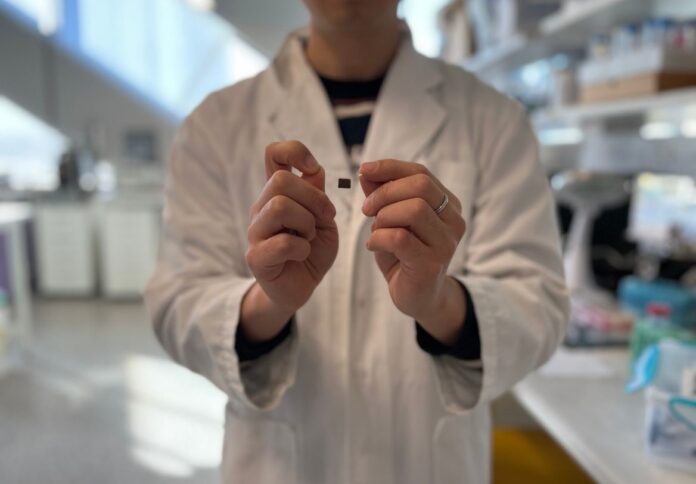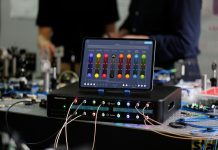
Researchers at Monash University have developed a new second-skin-like wearable technology that can monitor 11 human health signals.
The ultra-thin skin patch is equipped with nanotechnology and personalised artificial intelligence technology capable of identifying multiple body signals, understanding them, and making a decision on what to do next.
The research, published in Nature Nanotechnology, is expected to change how remote healthcare is delivered and could pave the way for the future of personal alarms and communications devices.
The sensor is made out of a laminated cracked platinum film, vertically aligned gold nanowires, and percolated gold nanowire film.
Worn on the neck, the ultra-thin wearable patch consists of three layers, measuring speech, neck movement, and touch. It also measures the user’s breathing and heart rates.
The skin on the neck is the most sensitive skin on the body and connects up to five physiological activities associated with the human throat: speech, heartbeats, breathing, touch and next movement.
“Emerging soft electronics have the potential to serve as second-skin-like wearable patches for monitoring human health vitals, designing perception robotics and bridging interactions between natural and artificial intelligence,” said Professor Wenlong Cheng, the study’s lead researcher.
Co-Author Associate Professor Zongyuan Ge from the Faculty of Information Technology said the researchers look forward to programming and personalising the sensors using even more sophisticated algorithms to customise the device for each individual user.
Work on the research was conducted mainly at the Monash Nanobionics lab and in part at the Melbourne Centre for Nanofabrication in the Victorian Node of the Australian National Fabrication Facility and the Monash Centre for Electron Microscopy.




















